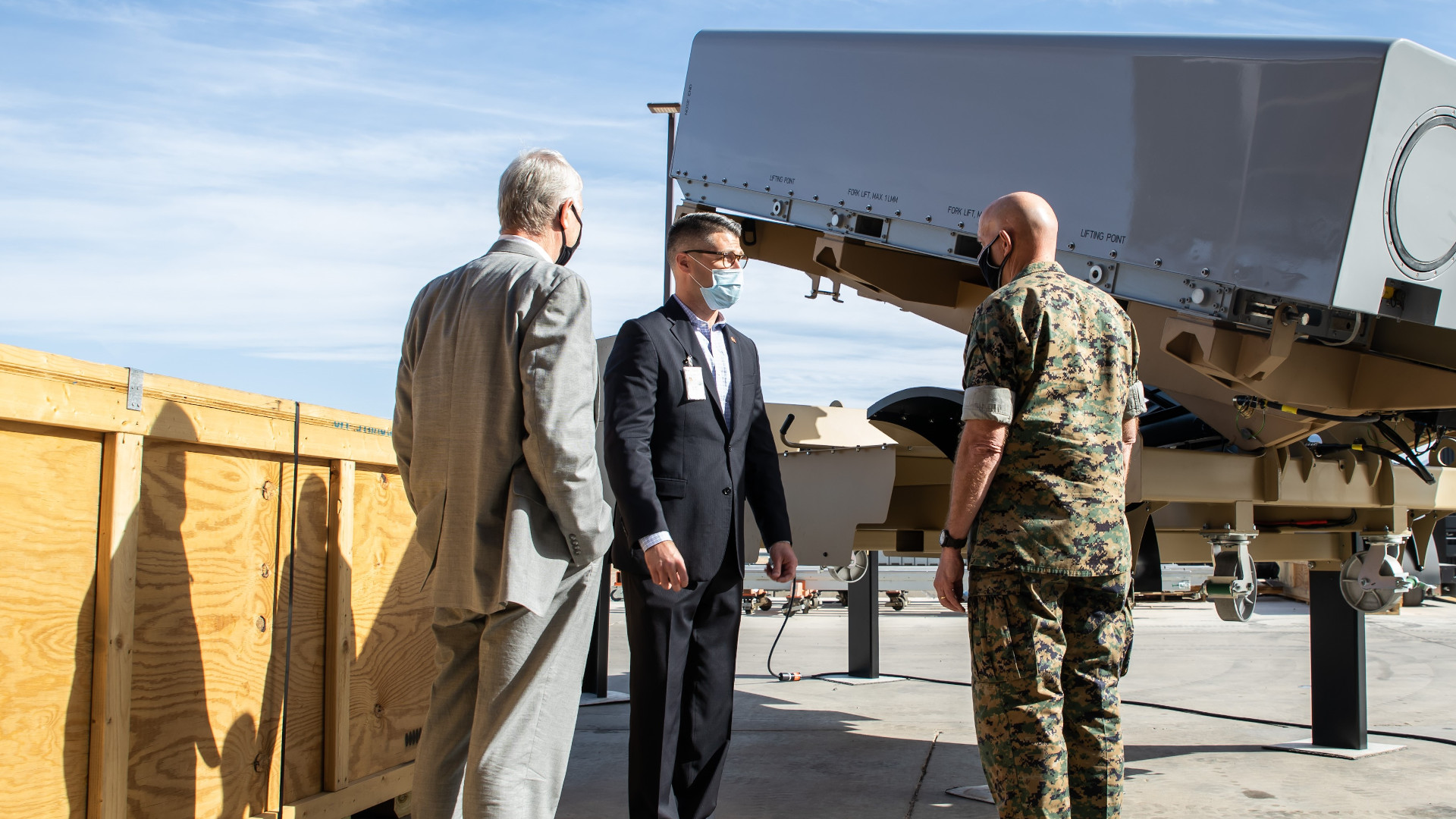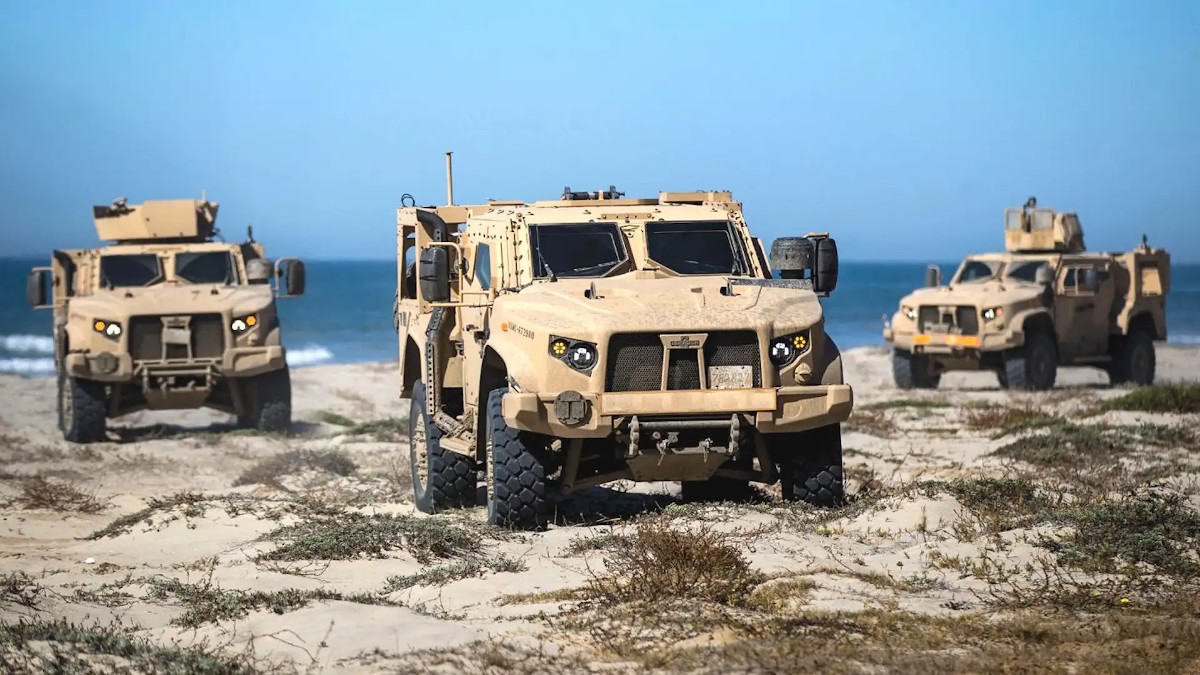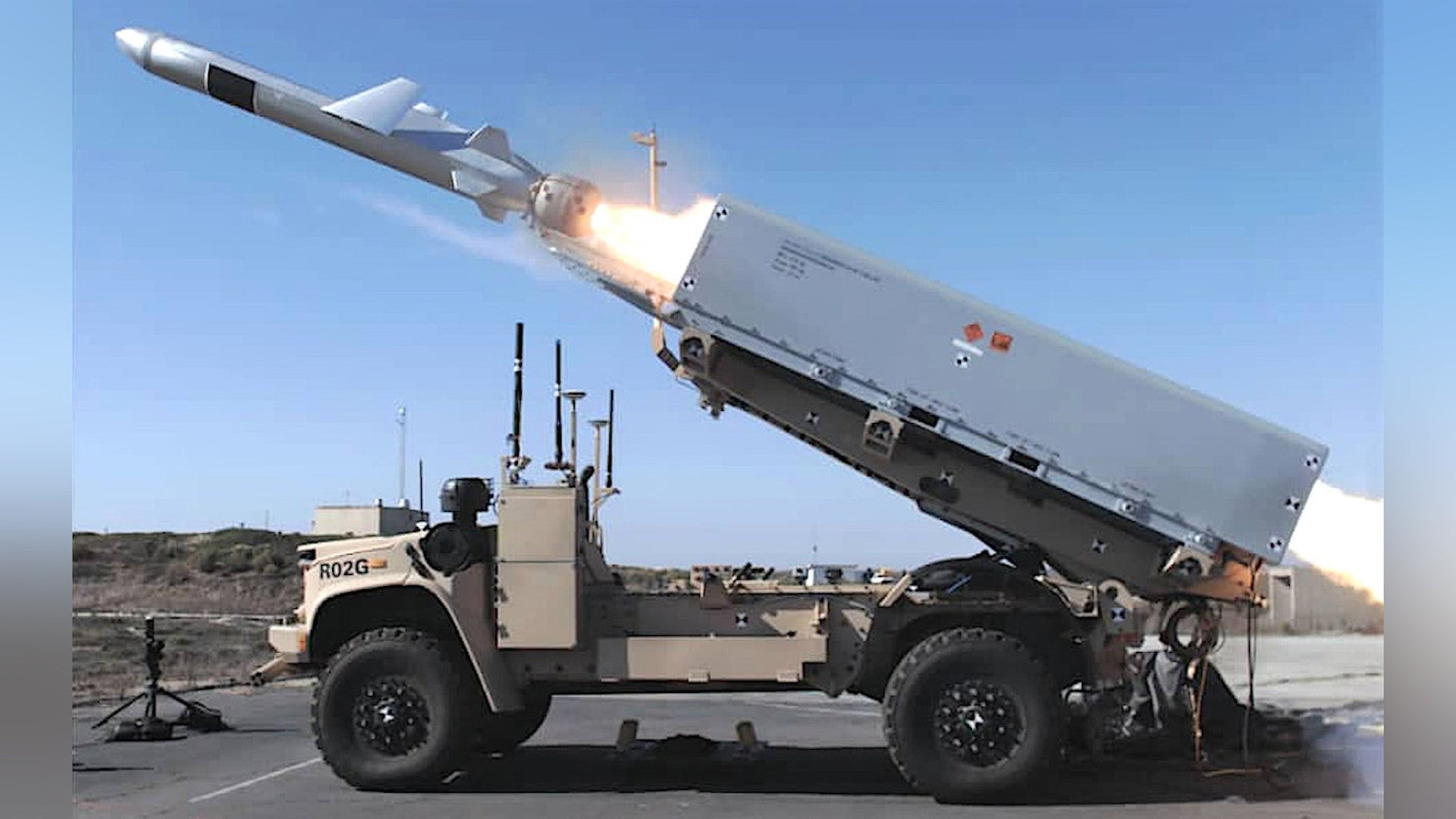We now have our first look at an unmanned variant the Joint Light Tactical Vehicle armed with Naval Strike Missile anti-ship cruise missiles that is under development for the U.S. Marine Corps. That service confirmed that a test of this system, an important component of an ongoing and radical restructuring of its forces, had taken place in November 2020, but no pictures were released at the time of the launch vehicle itself.
Raytheon released the picture, which is credited to the U.S. Navy, of what is officially known as the Navy Marine Expeditionary Ship Interdiction System (NMESIS) on April 28, 2020. The company subsequently confirmed to Naval News that the image was from the test last year. The complete NMESIS system consists of the unmanned Joint Light Tactical Vehicle (JLTV), also known as the Remotely Operated Ground Unit Expeditionary-Fires (ROGUE-Fires), and a launcher with two ready-to-fire Naval Strike Missiles (NSM) inside their self-contained launch canisters.

Two weeks ago, General David Berger, Commandant of the Marine Corps, visited with Raytheon about the program. Pictures, one of which is seen above, were posted to his official Twitter account showing the launch unit, but not mounted on a JLTV. “Marines + Ground-Based Anti-Ship Missiles (GBASM) = Deterrence,” the Tweet accompanying the images read.
“Our Naval Strike Missile is a vital weapon for denying enemies the use of key maritime terrain,” Kim Ernzen, Vice President of Naval Power at Raytheon Missiles and Defense, said in the press release that went along with the new picture of the NMESIS system. “This test further demonstrates our partnership for advancing the Marine Corps’ modernization priorities of enabling sea control and denial operations.”
Raytheon, in partnership with Norway’s Kongsberg, the developer of the NSM, has already been supplying those missiles to the Navy as part of an upgrade to both of its subclasses of Littoral Combat Ship. These stealthy anti-ship cruise missiles, which have a secondary land-attack capability and that you can read about in more detail here, are also set to among the weapons integrated onto the service’s future Constellation class frigates.
Kongsberg also offers NSM in a ground-launched configuration. The NMESIS launch unit looks to be at least derived from that system, which is more typically seen mounted on larger tactical trucks, as in the video below.

There remain limited details about the underlying ROGUE-Fires vehicle, which looks to use a largely unmodified 4×4 JLTV chassis and retains that vehicle’s hood over the front-mounted engine, but dispenses with the cab and the standard rear body arrangement. in 2015, the JTLV won a competition to become the replacement for the iconic Humvee in the U.S. Army and Marines Corps. These vehicles, which come in various configurations, including armed versions and light utility types, are now starting to replace those older Cold War-era 4x4s elsewhere across the U.S. military.

We don’t know yet the extent of ROGUE-Fires’ unmanned capabilities, such as whether or not it is simply remote-controlled by personnel on the ground or if it can operate in some kind of tethered, semi-autonomous mode where it could follow manned vehicles or dismounted personnel, or how close operators might need to be to the vehicles in either case. It’s similarly unclear whether it has more robust autonomous capabilities or if the Marines plan to add in that kind of functionality in the future. Oshkosh, which makes the JLTV, has already worked with the Marines, in cooperation with the Navy, in the past on driverless versions of other light tactical vehicles and trucks.
As a general concept, unmanned launch vehicles, networked together and with other offboard assets, could enable smaller units to bring significant strike capability to bear across a relatively broad area. At the same time, it could enable the launchers and their operators to be positioned in a more distributed manner, and be more readily able to move from one location to another, increasing their flexibility while also reducing their vulnerability to counterattacks. The U.S. Army is presently exploring the possibility of using unmanned launchers for its future Precision Strike Missiles (PrSM) for the same reasons.
It’s also important to point out that the Marines have, at least in the past, planned to use ROGUE-Fires vehicle as a launch platform for various kinds of munitions. The first artwork of the system that emerged in 2018 showed it fitted with a version of the launcher found on the High-Mobility Artillery Rocket System (HIMARS), which is capable of firing 227mm guided artillery rockets and Army Tactical Missile System (ATACMS) short-range ballistic missiles. The Army plans to use that same launcher to fire the PrSM, too. Separately, the Marine Corps is also looking to field larger, longer-range missiles than NSM, such as the Tomahawk cruise missile, using ground-based launchers.

For the Marines, these new ground-based missile capabilities are all part of the underlying concepts of operation driving its Force Design 2030 restructuring initiative, which you can read more about here and here, respectively. The basic idea is to be able to rapidly deploy groups of Marines to establish forward bases across a broad area of operations, such as on islands in the Pacific region, and then be able to just as quickly reposition as the needs of the battlespace change. From these bases, Marines will also be able to help deter hostile or potentially hostile forces from entering certain adjacent “seaspaces,” as was highlighted in the Tweet about GBASMs from General Berger earlier this month. If their sheer presence fails to ward off an opponent, they would then be well-positioned to engage them directly.
The Marines are still very much refining those concepts of operation and exactly how they plan to implement them. However the Marine Corps is structured by the end of the decade and how it sees its roles and missions, the service is pushing ahead with plans to make unmanned trucks carrying missile launchers a part of that future.
Contact the author: joe@thedrive.com
